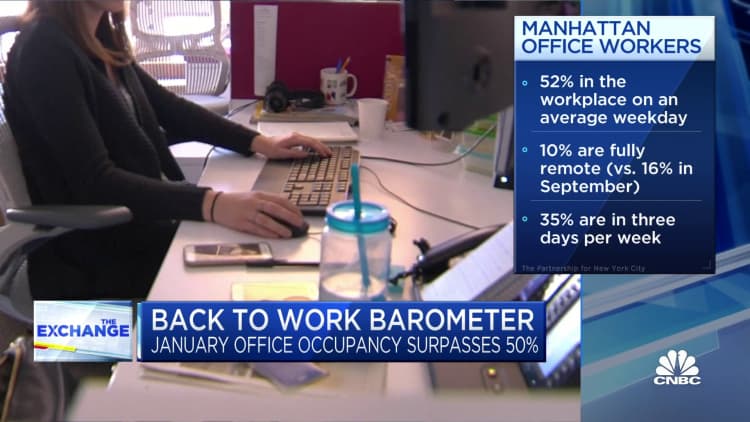
Employees are welcomed back to work with breakfast in the cafeteria at the Chicago Google offices on April 05, 2022 in Chicago, Illinois.
Scott Olson | Getty Images
Waves of layoffs, diminishing employee engagement, and the ongoing push and pull of getting workers back into the office are just some of the vexing issues that HR leaders are dealing with.
Still, one workplace expert says there’s never been a better or more exciting time to be a people leader. Erica Keswin, author of “Bring Your Human to Work,” said, “We have so many different tools to use to connect with people in so many ways. This is our moment.”
Yet, despite the front-and-center nature of HR leaders in a post-Covid, hybrid world, maintaining employee engagement and productivity three years after the lockdown can be exhausting. Speaking at CNBC’s Workforce Executive Council Town Hall earlier this month, one CHRO said she’s weary of trying to get employees back in the office. “Honestly, I’m tired of this whole conversation about where people sit for their jobs,” she said. “I don’t really care anymore.”
What people leaders do care about is keeping employees motivated, engaged, and productive. Keswin said two avenues can help with these challenges: empathy and experimentation. The empathy piece, she said, simply allows people executives to show up not only for themselves but for employees and direct reports. “None of us have ever been through a pandemic so recognize that there’s no one right way of doing things,” she said.
The experiment piece speaks to the ongoing iterations of workplace practices that all companies are experiencing. “We’re not always going to get things right the first time, but just acknowledging that and showing a little vulnerability and humanness will go a long way,” she added.
Return to office with a purpose
Getting workers back to the office requires purpose, Keswin said. Having employees endure a long commute to an office void of teammates is a “recipe for resentment,” she said. Instead, be intentional about why you want people in and align meetings and collaboration sessions to reflect the values of the company.
Terri Zandhuis, chief people officer at Krispy Kreme, said employees at the company’s Charlotte headquarters are required to be in the office a minimum of 50% of the time, but which days are up to them. To make the return more enjoyable, the company has offered free lunches, lunchtime learning sessions, and other fun activities. “It’s not groundbreaking, but it’s helped people to get over the mental hurdle of getting out of their sweatpants and around other people again,” Zandhuis said.
“I really do think the personal connections are more energizing for people. I know they are for me,” she said. “When I started coming back in, I realized that driving home I had so much more energy than I did when I finished the day at home.”
Keswin said one financial services client she works with focuses on health, wealth, and growth. When workers are in the office the company makes sure that they are providing opportunities for employees to focus on those areas. “They’re not telling people to come in and then leaving it to chance,” she said.
Looking for ways to boost engagement doesn’t mean that HR leaders have to become “camp counselors,” Keswin added. Finding ways to make work fun and enticing in order to get employees back in the office or more connected to their job, doesn’t always need to fall to the HR director. Keswin said some companies are creating positions known as connection curators — a role that focuses on creating connections for employees whether they’re working at home or in the office.
Rituals are another way to boost engagement without having to offer free food or parties every week, Keswin said. One company she works with starts a weekly meeting by asking one participant to share their origin story with the rest of group. Another starts by asking each participate to name the word that best describes how they’re feeling on that day. Still another company has been able to have consistent attendance and engagement at a virtual 90-minute monthly status meeting by incorporating several different elements like alternating hosts, fun quizzes, a robust chat function, and mini-interviews with senior leaders. “It’s like a variety show and really keeps people way more engaged than if one person just gave a status update,” Keswin said.
Zandhuis said Krispy Kreme has been holding monthly all-hands meetings — known internally as a “donut break” — to discuss what’s been happening at the company, report success stories, and recognize employees that are doing great things. “We don’t really call these rituals because we were doing this long before the pandemic,” she said. “But it really is a way for people to get into the cadence of the culture here and what we’re all about. We’re a fun brand and we want that energy to come through whenever we’re together.”
To join the CNBC Workforce Executive Council, apply at cnbccouncils.com/wec.

